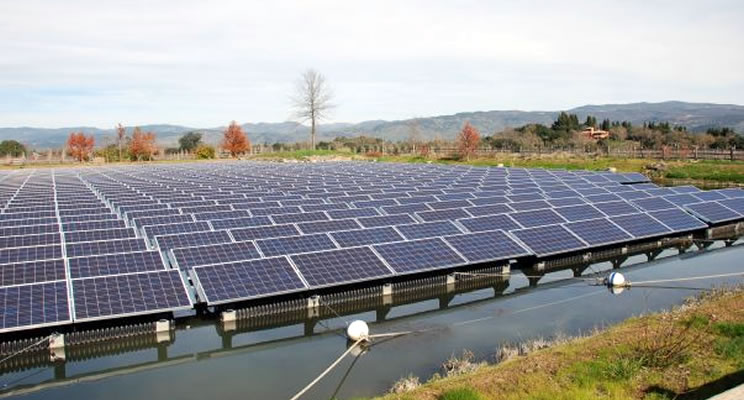RIVERSIDE, CA – There’s a tradeoff when sprawling solar farms pop up on agricultural land: farmland disappears, perhaps forever, in return for growth in the promising renewable energy sector.
But what if large solar installations could be built away from agricultural land, eliminating the competition between two important industries?
In a study published today in Environmental Science and Technology, researchers at the University of California, Riverside and the University of California, Davis, explored the possibility of developing solar installations on a variety of unconventional sites in California’s Central Valley. They focused on this region, which comprises 15 percent of California’s landmass, because it is an area where food production, urban development and conservation collide.
Michael Allen, a distinguished professor emeritus of plant pathology and biology at UC Riverside and director of the university’s Center for Conservation Biology, said many existing solar farms are built in unsuitable areas, where they encroach on natural or agricultural lands already under threat from urban sprawl.
“When a piece of land is developed for a solar installation, it is very unlikely to be reverted into agricultural land, even when the lease to the solar company eventually runs out. That’s because flattening and compacting the land, as well as the long-term application of herbicides to keep the site clear of weeds, spoils the land for future farming,” Allen said. “For this reason, it is important that we explore alternative sites for new developments as the industry continues to grow.”
The researchers evaluated four unconventional areas: (1) developed areas within agricultural landscapes, such as rooftops, transportation corridors, and parking lots; (2) land that is too salty for crops to grow, either because of naturally occurring salts or buildup from human activities; (3) reclaimed areas that were previously contaminated with hazardous chemicals; and (4) reservoirs and irrigation channels that can accommodate floating solar panels.
Combining all these potential sites, the team identified more than 8,400 square kilometers (equal to 183,000 football fields) of the Central Valley’s 55,800 square-kilometer footprint as nonagricultural, developed land suitable for large solar installations.
Continue Reading Here: https://ucrtoday.ucr.edu/50619

